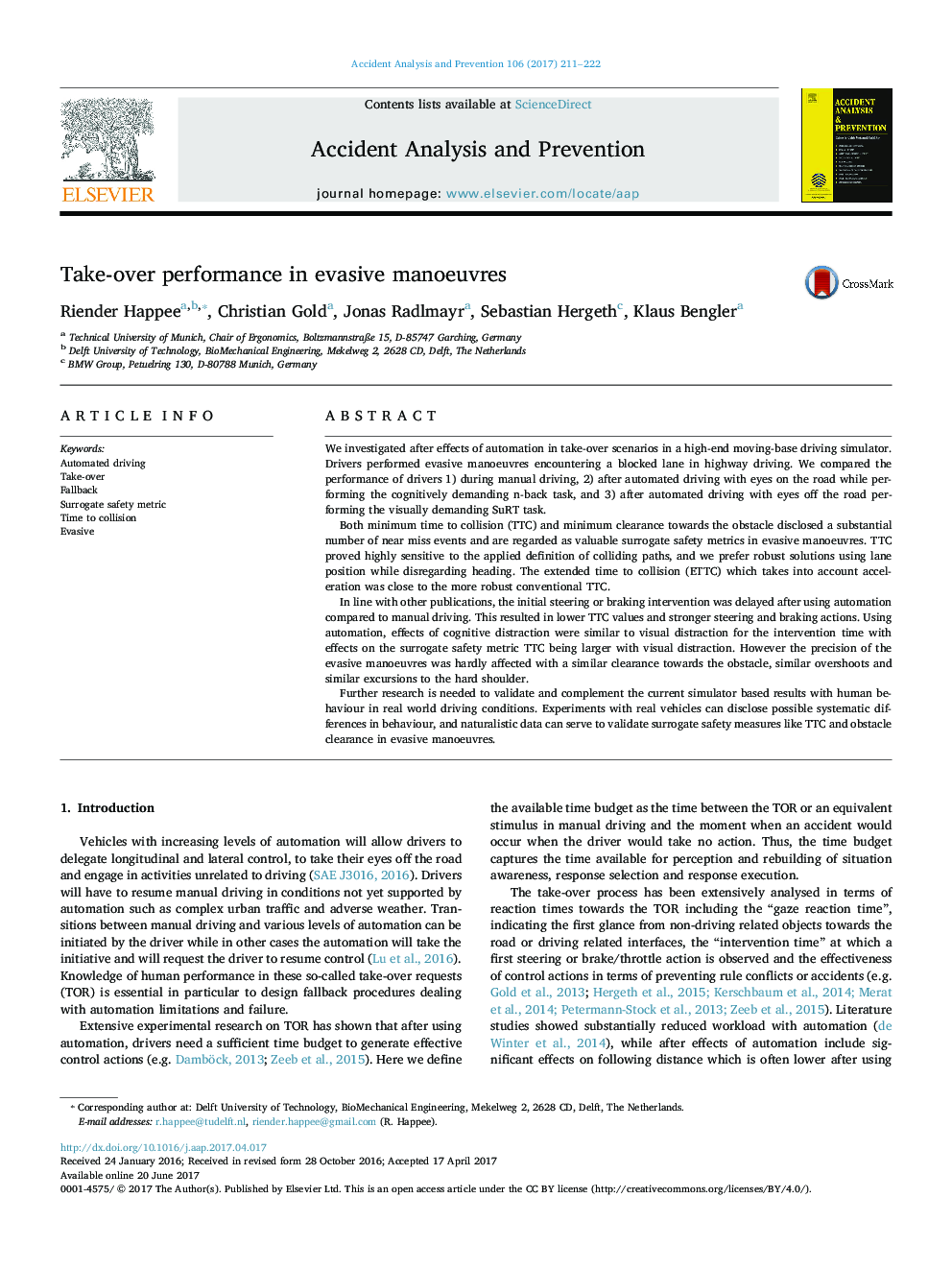| کد مقاله | کد نشریه | سال انتشار | مقاله انگلیسی | نسخه تمام متن |
|---|---|---|---|---|
| 4978688 | 1452893 | 2017 | 12 صفحه PDF | دانلود رایگان |
- Minimum time to collision (TTC) and clearance towards the obstacle are complimentary surrogate safety metrics in evasive manoeuvres.
- TTC is highly sensitive to the definition of colliding paths, and we prefer robust solutions using lane position while disregarding heading.
- Using automation, cognitive and visual distraction led to similar intervention times with effects on TTC being larger with visual distraction.
- The precision of evasive manoeuvres was hardly affected by automation.
We investigated after effects of automation in take-over scenarios in a high-end moving-base driving simulator. Drivers performed evasive manoeuvres encountering a blocked lane in highway driving. We compared the performance of drivers 1) during manual driving, 2) after automated driving with eyes on the road while performing the cognitively demanding n-back task, and 3) after automated driving with eyes off the road performing the visually demanding SuRT task.Both minimum time to collision (TTC) and minimum clearance towards the obstacle disclosed a substantial number of near miss events and are regarded as valuable surrogate safety metrics in evasive manoeuvres. TTC proved highly sensitive to the applied definition of colliding paths, and we prefer robust solutions using lane position while disregarding heading. The extended time to collision (ETTC) which takes into account acceleration was close to the more robust conventional TTC.In line with other publications, the initial steering or braking intervention was delayed after using automation compared to manual driving. This resulted in lower TTC values and stronger steering and braking actions. Using automation, effects of cognitive distraction were similar to visual distraction for the intervention time with effects on the surrogate safety metric TTC being larger with visual distraction. However the precision of the evasive manoeuvres was hardly affected with a similar clearance towards the obstacle, similar overshoots and similar excursions to the hard shoulder.Further research is needed to validate and complement the current simulator based results with human behaviour in real world driving conditions. Experiments with real vehicles can disclose possible systematic differences in behaviour, and naturalistic data can serve to validate surrogate safety measures like TTC and obstacle clearance in evasive manoeuvres.
Journal: Accident Analysis & Prevention - Volume 106, September 2017, Pages 211-222
